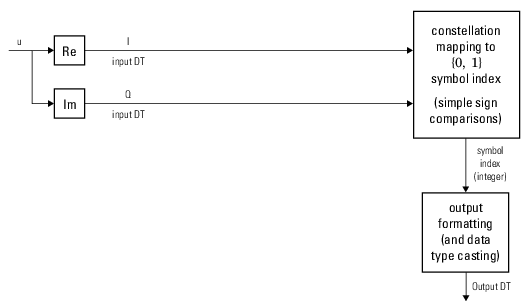comm.BPSKDemodulator
(To be removed) Demodulate using BPSK method
comm.BPSKDemodulator will be removed in a future release. Use pskdemod instead. For information on updating your code, see Version History.
Description
The comm.BPSKDemodulator
System object™ demodulates a signal that was modulated using the binary phase shift keying
method. The object maps the points exp(jθ) or -exp(jθ) to 0 and 1, respectively. The PhaseOffset property specifies the
value of θ in radians.
To demodulate BPSK-modulated signal data:
Create the
comm.BPSKDemodulatorobject and set its properties.Call the object with arguments, as if it were a function.
To learn more about how System objects work, see What Are System Objects?
Creation
Syntax
Description
bpskdemodulator = comm.BPSKDemodulator
bpskdemodulator = comm.BPSKDemodulator(Name,Value)Name1,Value1,...,NameN,ValueN).
bpskdemodulator = comm.BPSKDemodulator(phase,Name,Value)PhaseOffset property is set to
phase, and the other specified properties set to the specified
values.
Properties
Usage
Description
Input Arguments
Output Arguments
Object Functions
To use an object function, specify the
System object as the first input argument. For
example, to release system resources of a System object named obj, use
this syntax:
release(obj)
